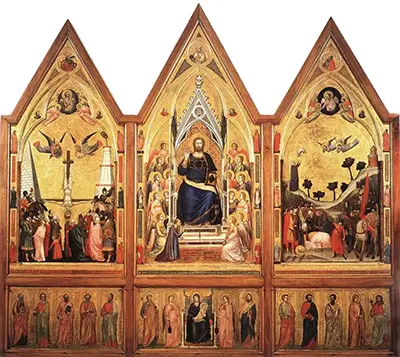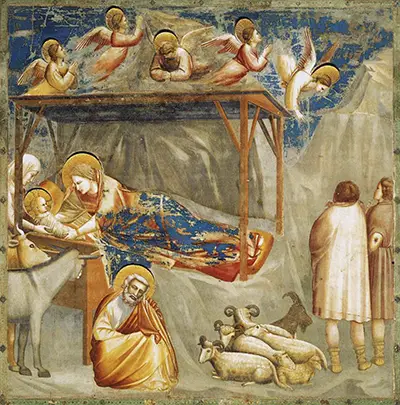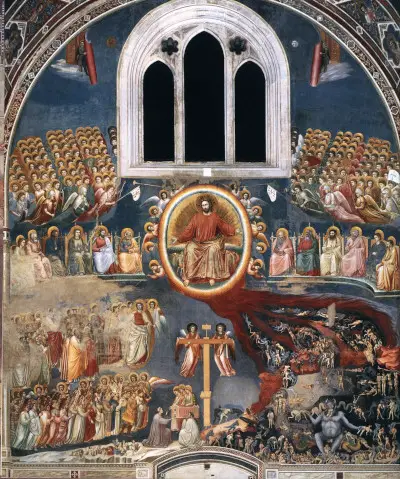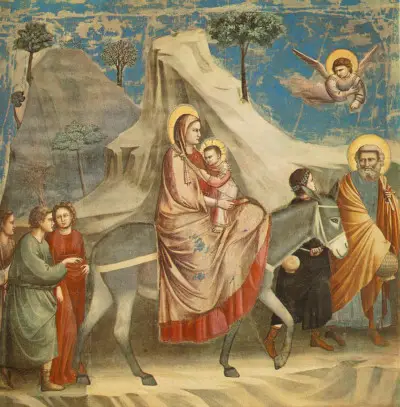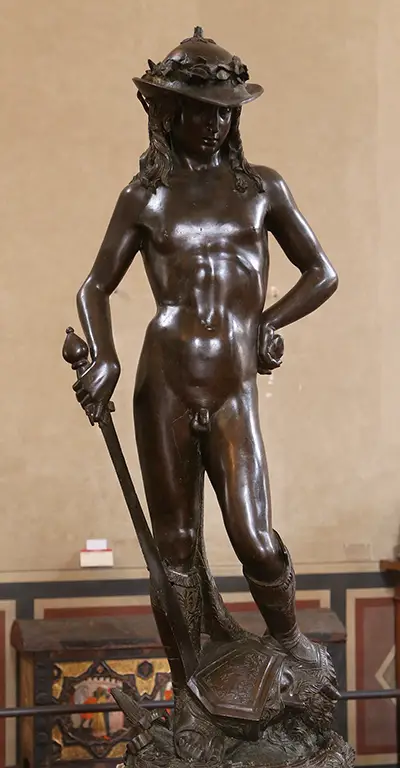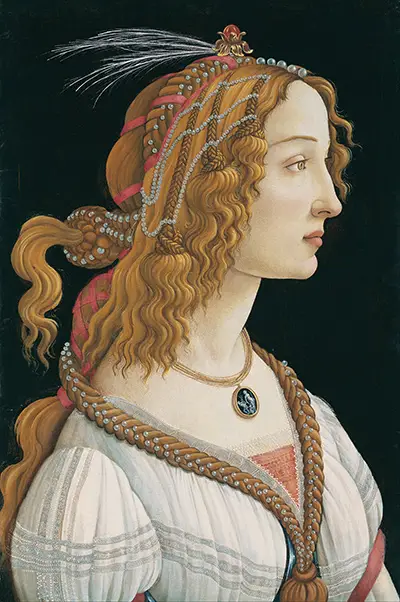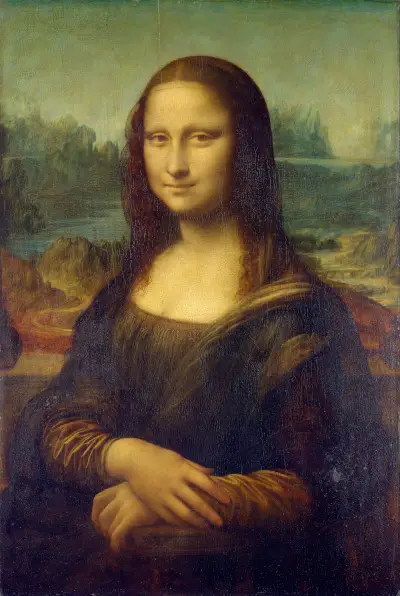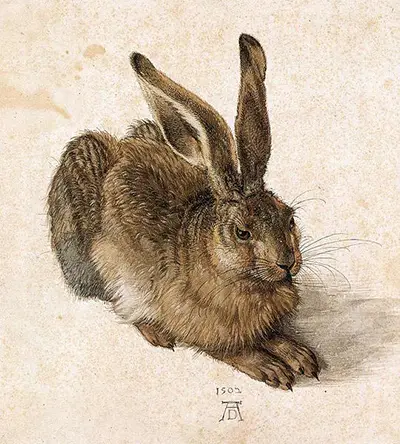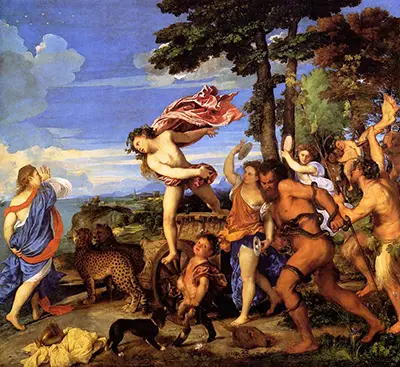The Epiphany appeared towards the end of Giotto di Bondone’s career, in around 1320-1325.
Introduction
This relatively small painting is smaller than half a meter in height and width, a far cry from the monstrous frescoes which he produced elsewhere. Giotto combined tempera with ground elements of gold to put this delightful piece together which today resides at the Metropolitan Museum of Art.
Description
Giotto would sometimes merge multiple narratives into a single scene and within The Epiphany he does precisely that. We find Adoration of the Magi and the Annunciation together, combining the content for the foreground and background.
Once aware of the themes involved, the figures can easily be identified. Crowned figures stand in the foreground, celebrating the newborn baby, whilst the mother looks on. Above we find angels circling, whilst a musician plays.
One element to this work which many feel is of note would be how Christ the child is lifted up, much to the concern of his mother. This brings a human side to events, something which other artists of this period may not have done, but was very much in the Naturalism method used by Giotto throughout the early 14th century.
The artwork features some stunning detail across the many figures, such as the crowns in the lower half. The Kings’ outfits are also completed with precise drapery and some ornate decoration for the king who holds up the child.
Giotto’s original colors have been faithfully preserved with a wider palette used by Giotto than most other artists in Italy at that time. Each figure’s clothing would often have a separate tone which allowed them their own personality and significance to the overall composition, where as others would often merge people together into groups.
Location
The painting was donated to the American museum via the John Stewart Kennedy Fund in 1911, making it one of the few Giotto artworks to reside today within the US. The original work remains in excellent condition and has benefited from being removed from potentially aging architecture, to a temperature controlled setting.
Conclusion
This Giotto masterpiece is a popular sight for American followers of the artist. It retains much of the original work, including bright tones and the touches of ground-down golden paint. We can also witness the figurative qualities of this artist who would become a major figure in the early stages of the Italian Renaissance.
The content is also highly typical of the artist, with a combination of multiple religious stories, brought together in an innovative manner. He would have already covered both the Annunciation and the Adoration of the Magi several times by this point in his career and so would have been focused on re-inventing these stories once more as he did not like repetition in his oeuvre.
More Renaissance Artists




 Giotto.jpg)
 Giotto.jpg)
